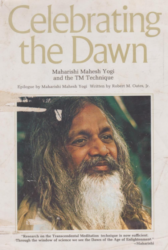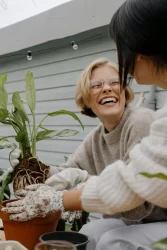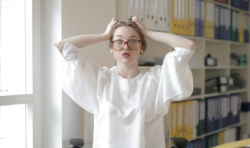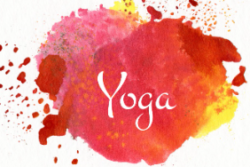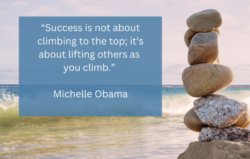A Strike Against Stroke

Because I have women friends and relatives who have become incapacitated to varying degrees from strokes, I take preventative steps to avert having one myself. There is abundant information on everything about strokes—you have only to start looking. Below is a summary of the knowledge on this topic that I have gained.
Arteries, the Brain, and Stroke
Arteries transport blood for the circulatory system and lymph for the lymphatic system to and from every organ in the body. They transport oxygen, nutrients, and hormones.
The brain is a complex organ responsible for thought, memory, emotion, touch, motor skills, vision, breathing, temperature, hunger, and all bodily processes.
A stroke, which is sometimes called a brain attack, can result from either a blocked artery or a ruptured artery—either something blocks the supply of blood to part of the brain (ischemic stroke) or a blood vessel in the brain bursts (hemorrhagic stroke).
Big Red Flags
Be informed enough to be able to size up the situation. Here is a list of commonly known warning signs of stroke—all of which would appear suddenly:
- Numbness or weakness of the face, arm, or leg, especially on just one side of the body
- Confusion and difficulty speaking or understanding
- Trouble seeing
- Trouble walking
- Dizziness, loss of balance and/or coordination
- Unexplained intense headache
If you or anyone else presents with some of these symptoms, an immediate visit to a hospital emergency room is vital. Emergency medical staff will administer acute stroke medications to try to stop the stroke as it is happening. Ischemic stroke is, by far, more common and can be treated with a clot-busting drug as fast as possible but definitely within three to four hours after the onset of symptoms. Do not take aspirin—if you’ve had a hemorrhagic stroke, aspirin will make it more severe.
Women, Strokes, and Life in the Aftermath
The effects of a stroke depend on several factors, including the location of the obstruction in the brain and how much brain tissue is affected. Results can include paralysis and impaired speech, language, vision, and memory, as well as behavioral and emotional changes. Health specialists can help a victim of stroke to improve—sometimes quickly and sometimes very slowly—but a serious stroke can leave the patient impaired and dependent.
The Heart and Stroke Foundation of Canada said in a 2023 report:
While people of any age can have a stroke, women are disproportionately affected. Their risk triples during pregnancy and is also higher after menopause and when they’re elderly because strokes can be more severe then, putting them at risk of dying…. In 2019, almost a third more women died of stroke than men. When they survive a stroke, their outcomes are worse, including the toll on their mental health. Nobody wants to be incapacitated or dependent, but women are most usually responsible for caretaking others so they become incapable twice over and are likely to become depressed.
Patrice Lindsay, Director of Health Systems for the foundation, said women are up to 60 percent less likely to fully recover from a stroke compared with men.
Heaven-Sent Prevention
Almost 80% of strokes can be prevented by making healthy lifestyle changes and consulting with healthcare practitioners to control stroke risk factors. Researchers and physicians have identified numerous steps people can take to lower stroke risk, with an emphasis on preventing and reducing heart disease. On everyone’s list is do not smoke. Women are recommended not to exceed one alcoholic drink each day. Keep tabs on cholesterol levels, symptoms of diabetes, and blood pressure by testing at regular intervals—If you have issues with these, then lifestyle (exercise regime, diet, Transcendental Meditation) and medicinal changes may help significantly.
Step it up!
More active women have up to a 30 percent lower risk of stroke than those who are mostly inactive. Evidence shows that physical activity lowers cholesterol, helps maintain a healthy weight, and lowers blood pressure – all of which can reduce your risk of stroke.
Dr. Vladimir Hachinski, a neurologist and world-renowned expert in the field of stroke, emphasized the importance of even minor amounts of exercise. He said, “The worst thing that can happen is to sit all day. Walking is the best exercise there is. Get up and walk around.”
Ease Up!
The personal experiences of many women as well as scientific research have shown that many stroke risk factors—including smoking, alcohol abuse, hypertension, atherosclerosis, unhealthy eating impulses, and inactivity due to fatigue—can be reduced or eliminated as a result of the practice of the deeply restful, stress-busting Transcendental Meditation technique.
The TM technique, practiced sitting comfortably with eyes closed, is simple, natural, and truly effortless. It does not involve religion, philosophy, a special diet, or a change in lifestyle. TM allows the mind and body to gain deep rest and eliminate deeply rooted stress.
Research funded by the National Institutes of Health found that those who practiced the TM technique most regularly had very positive results—a 66% greater reduction in heart attacks, strokes, and mortality than controls.
TM decreases heart attacks, strokes, and death in heart patients: Ten-year study Circulation: Cardiovascular Quality and Outcomes, 2012;5(6): 750-758.

A 2013 American Heart Association scientific statement reported that the Transcendental Meditation technique lowers blood pressure and is associated with substantially reduced rates of stroke, death, and heart attack.
Conclusion
I believe that averting a stroke (and any debilitating disease) is paramount. It’s not something to “deal with if it happens” but something to prevent. Do not be complacent just because you are apparently healthy now. Get health screenings as necessary, recognize risk factors, and reduce them. Since twice-daily TM will reduce many factors that make you vulnerable to stroke, learn it ASAP from a certified teacher. Your life, well-being, and freedom are precious—take charge now!
Connect with a Nearby Certified TM Teacher
About the Author
Janet Hoffman is the executive director of TM for Women Professionals, a division of TM for Women in the USA
